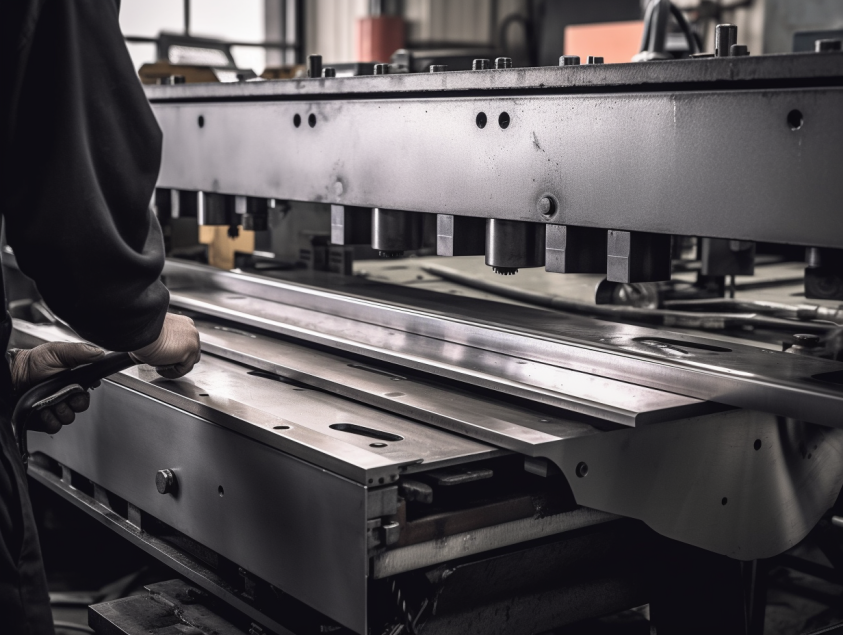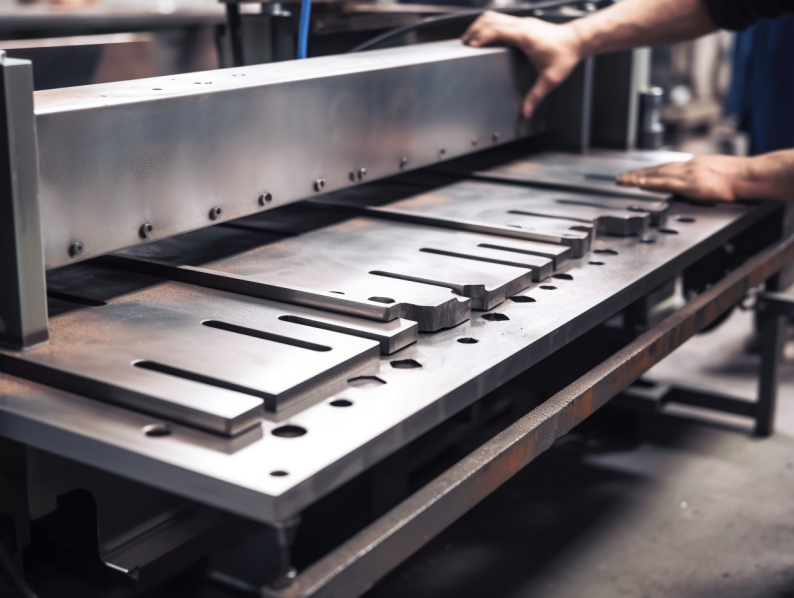Sheet metal fabrication is a versatile and widely used process in industries ranging from automotive and aerospace to electronics and construction. The process involves bending and forming metal sheets to create a variety of parts and components. However, the bending process can introduce stresses and potential weaknesses in the material, particularly at bends and corners. To address these concerns and ensure both the structural integrity of the final product and efficient manufacturing, engineers and designers rely on sheet metal bend relief guidelines.
Bend relief, also known as bend allowance or bend deduction, is a design technique used to mitigate the effects of stress and deformation that occur during the bending process. When a metal sheet is bent, the inner radius compresses while the outer radius stretches. This results in varying material thicknesses along the bend, which can lead to issues such as cracking, distortion, and uneven surfaces. Bend relief techniques are employed to manage these challenges and produce high-quality bent components.

Creating successful bend relief designs requires careful consideration of various factors:
1. Material Selection and Thickness
Choosing the appropriate material and thickness is paramount. Material properties like tensile strength and ductility play a crucial role in determining how the material responds to bending. Thicker materials require larger bend radii to prevent cracking, while softer materials may require smaller radii to avoid deformation.
2. Bend Radius
The bend radius, or the curvature of the bend, significantly influences the outcome of the sheet metal bending process. Larger bend radii result in reduced stress concentrations and minimized distortion, but excessively large radii might lead to impractical designs. Finding the optimal bend radius is a balance between material integrity and the desired shape.
3. Geometry Modifications
Incorporating fillets, rounded corners, or other geometric modifications can aid in distributing stresses more evenly along the bend. These design elements create smoother transitions between the flat and bent sections, reducing the likelihood of cracks and distortion.
4. Bend Orientation
Aligning the bend direction with the sheet's grain direction enhances the bend's overall strength and minimizes the risk of cracking. Proper bend orientation ensures that the material's properties are consistent throughout the bent component.
5. Bend Allowance Calculation
Accurate calculation of bend allowances is essential for predicting material behavior during bending. Modern computer-aided design (CAD) software often includes tools for calculating bend allowances based on material properties and bend parameters. These calculations aid in achieving the desired bent shape without compromising material integrity.
6. Relief Cuts and Notches
Strategic relief cuts or notches can alleviate stress concentrations in complex shapes or sharp corners. These cuts allow the material to distribute stresses more uniformly, reducing the potential for cracks and deformation.
7. Prototyping and Testing
Prototyping and testing are crucial steps to validate the effectiveness of bend relief strategies. Creating prototypes and subjecting them to bending processes helps engineers identify potential issues and refine the design before moving to full-scale production.

Sheet metal bending is a fundamental process in the world of manufacturing, allowing raw metal sheets to be transformed into complex shapes and functional components. From automotive panels to household appliances, the ability to bend sheet metal accurately and effectively is a cornerstone of modern industry. HSJ, a seasoned specialist in sheet metal fabrication, has extensively cultivated expertise in the realm of sheet metal bending. In the following part, we'll explore the step-by-step process of bending sheet metal, providing you with insights into the techniques and tools required for successful bending.
Step 1: Material Preparation
Before diving into the bending process, it's crucial to prepare the sheet metal properly:
Material Selection: Choose the appropriate sheet metal material based on factors like project requirements, strength, and corrosion resistance.
Sheet Thickness: Determine the thickness of the sheet metal, as it affects bending force and the required tooling.
Clean Surface: Ensure the sheet metal is free of debris, oil, and contaminants to prevent imperfections during bending.
Step 2: Marking and Measurement
Accurate marking and measurement are essential for achieving the desired bending angle and location:
Marking: Use a ruler, calipers, or marking tools to indicate the bending line accurately on the sheet metal.
Bend Line Offset: Consider the bend allowance – the amount of material that will be displaced during bending – and mark the bend line slightly beyond the intended bending angle.
Step 3: Tool Selection
The choice of tools depends on the complexity of the bend and the equipment available:
Press Brake: A press brake is a common tool used for precise sheet metal bending. It consists of a punch and a die that create the bend by exerting force on the metal.
V-Die: The V-die determines the bending angle by guiding the sheet metal as it's pressed against the punch.
Upper Die: The upper die, also known as the punch, applies force to the sheet metal, causing it to bend.
Step 4: Clamping
Securing the sheet metal in place prevents movement during bending:
Positioning: Place the sheet metal between the V-die and the upper die, aligning it with the marked bend line.
Clamping: Use clamps or a pneumatic hold-down system to keep the sheet metal firmly in position.
Step 5: Bending Process
Executing the bend requires precision and control:
Adjustment: Set the press brake's parameters, including the desired bending angle and the bend radius.
Bending: Activate the press brake to lower the upper die onto the sheet metal. The sheet metal will start bending along the marked line.
Pressure Monitoring: Keep an eye on the bending process to ensure the material isn't being stressed beyond its limits.
Step 6: Unclamping and Inspection
After the bending process, it's time to assess the results:
Unclamping: Release the clamps or hold-down system to remove the bent sheet metal from the press brake.
Inspection: Examine the bent component for any defects, cracks, or deviations from the intended shape.
Step 7: Finishing
Depending on the project's requirements, additional finishing steps might be necessary:
Deburring: Remove sharp edges and burrs created during the bending process.
Surface Treatment: Apply coatings, paints, or other treatments to enhance the appearance and protect against corrosion.
Mastering sheet metal bend relief is an integral skill for achieving high-quality, accurately bent components. By understanding the principles behind bend relief and applying appropriate guidelines and techniques, manufacturers can mitigate material deformation, reduce the likelihood of defects, and ultimately produce superior sheet metal products. Whether it's for functional prototypes or mass production, a thorough grasp of bend relief contributes to the success of sheet metal fabrication across diverse industries.